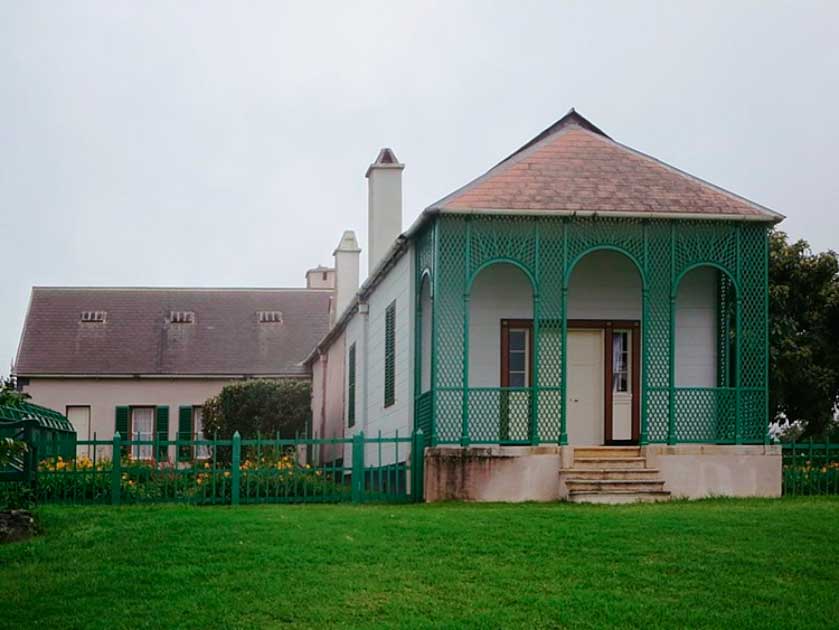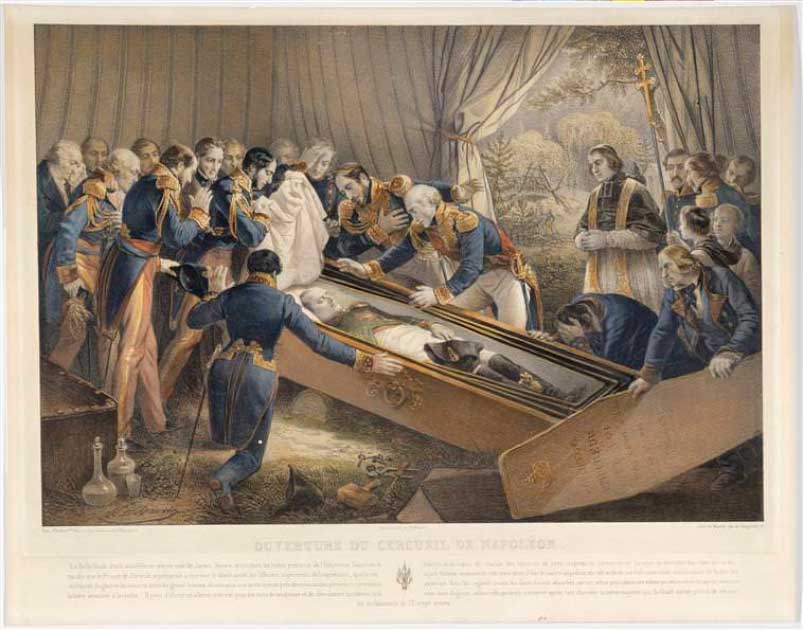Few people have lived their lives so publicly as Napoleon Bonaparte. We know what he was thinking at key points in his career. We know the tactics that he employed allowing him to defeat the entirety of Europe in battle after battle. We know of his despair at defeat and exile. And we know he died very young.
Napoleon was only 51 when he died, and there have been a lot of speculations about the cause of his death. Of course, this is only natural: this was a man who had thrown Europe into war for a decade, who had returned from exile once before to almost defeat his enemies, and who had been stationed in the south Atlantic in an effort to keep him far enough away from Europe for everyone to feel safe.
Accordingly, many are suspicious about his sudden, early death. Some theorize that the British assassinated him, but historians have a more prosaic and yet more bizarre suggestion to offer. Was Napoleon killed by his wallpaper?
Napoleon’s Final Fate
Napoleon Bonaparte was perhaps the most successful son of the French Revolution. Rising from a lowly artillery officer, his military successes saw him crowned Emperor of the French in 1804: the Revolution had lasted barely 15 years before France had another despot.
Napoleon was the Emperor of the French from the year 1804 to 1814. Finally, with his armies crumbling after a retreat all the way to France from his catastrophic invasion of Russia, he was forced to abdicate. Banished from France, he was exiled to Elba in the Mediterranean.
But he was gone less than a year, returning to lead the French again from the 20th of March 1815 to the 22nd of June 1815. After his final defeat at Waterloo, he was exiled again, but this time much farther away.

Napoleon’s second exile was to be on Saint Helena island. Precautions were taken to ensure that he did not escape from his new captivity. In December 1815, he was moved to Saint Helena’s Longwood House, where he would live for the rest of his life.
The location was unhealthy, damp, and windswept, and Napolean complained about the living condition of the place in a letter to the governor of the island. A contemporary article published in The Times even accused the British Government of trying to hasten his death by sending him there.
- Psychological Observations of Napoleon Bonaparte
- The Mysterious Death of a Genius: What Killed Mozart?
But the letter was wrong, and the location was not the problem. Instead, a silent killer may have been living in the same house as Napoleon, in his brightly colored wallpaper.
Modern scientists have speculated that the later illness of Napoleon may be due to arsenic poisoning. It might be caused due to copper arsenite present in green dye in Longwood House’s wallpaper.
Death of Napolean Bonaparte
Napoleon only lasted six years on St Helena, and Barry O’Meara, the personal physician of Napoleon, had warned London about the declining health of the emperor. According to him however, harsh treatment was the main cause of the deterioration of his health.

Napoleon was confined for months in the mold-infested, wretched, and damp habitation. After years of loneliness and isolation, the emperor started showing symptoms of depression. In February 1821, his health started deteriorating at a rapid pace, and by March, he had become confined to his bed.
On the 5th of May, 1821, Napoleon died at the Longwood House. An autopsy was conducted, and later his intestines and heart were removed and kept in two different sealed vessels. Louis Philipe I, the reinstated King of the French, received the British government’s permission to return the remains of Napoleon to France in 1840.
Even after being dead for about two decades, Napoleon was very well preserved. The body was not decomposed at all. On the 15th of December, 1840, his state funeral was conducted.
The Real Cause of Napolean’s Death
Ever since the death of the defeated emperor, there has been a lot of debate about the cause of his death. According to the autopsy report, it was found that the cause of death of the emperor was stomach cancer. The father of Napoleon had also died due to stomach cancer.
However, many believed that stomach cancer was a very convenient explanation provided by the British. It is because they wanted to avoid criticism relating to the treatment of Napoleon in their care.
Cancer is still a plausible explanation, but what might the British be covering if we are to assume they were lying. Perhaps the answer does indeed lie in the wallpaper.
In the year 1955, the diaries of Louis Marchand were published. Louis Marchand was the valet of Napoleon, and his descriptions suggest that deliberate arsenic poisoning was the real cause behind the death of the emperor.
During that era, arsenic was known to be used as a poison as it was undetectable when given for a long period of time. Moreover, arsenic was also used in several industrial processes, and the green color was one.

When the body of Napoleon was moved in 1840, it was very well preserved. As arsenic is popular as a strong preservative, it led people to believe the poisoning hypothesis. Moreover, after the death of Napoleon, a lock of his hair was taken from the memorial locket and sent for testing. The result showed the presence of high content of arsenic.
However, there is no evidence that the green wallpapers contained arsenic, and no evidence has been found that could show Napoleon was deliberately poisoned in the Longwood House. There is a possibility that the arsenic could have been ingested by the emperor due to rat poison used in the Longwood House, but this remains only a theory.
Moreover, modern studies seem to support the reports of the autopsy. In a study conducted in the year 2008, researchers analyzed the hair samples of Napoleon from different phases of his life. It was found that all the samples contained high levels of arsenic, nearly 100 times higher than the average level.
The findings of the researchers showed that the body of the emperor was heavily contaminated with the presence of arsenic. It was also found that the high concentration of arsenic present in the hair of Napoleon was not due to intentional poisoning.
At that time, people were exposed to arsenic throughout their lives from dyes and glues. According to the different studies conducted between 2007 to 2008, arsenic poisoning was dismissed. Gastric cancer and peptic ulcer were considered to be the main reasons for the death of Napoleon.
However, arsenic can cause stomach cancer, and many supporters of the emperor blame the British government for his death. The real cause of the death of Napoleon continues to remain a mystery. Whether his death was natural, a murder, or simply an accident is yet to be resolved.
Top Image: The Death of Napoleon. Did the green dye in his wallpaper poison him? Source: Unknown Author / CC BY 4.0.
By Bipin Dimri